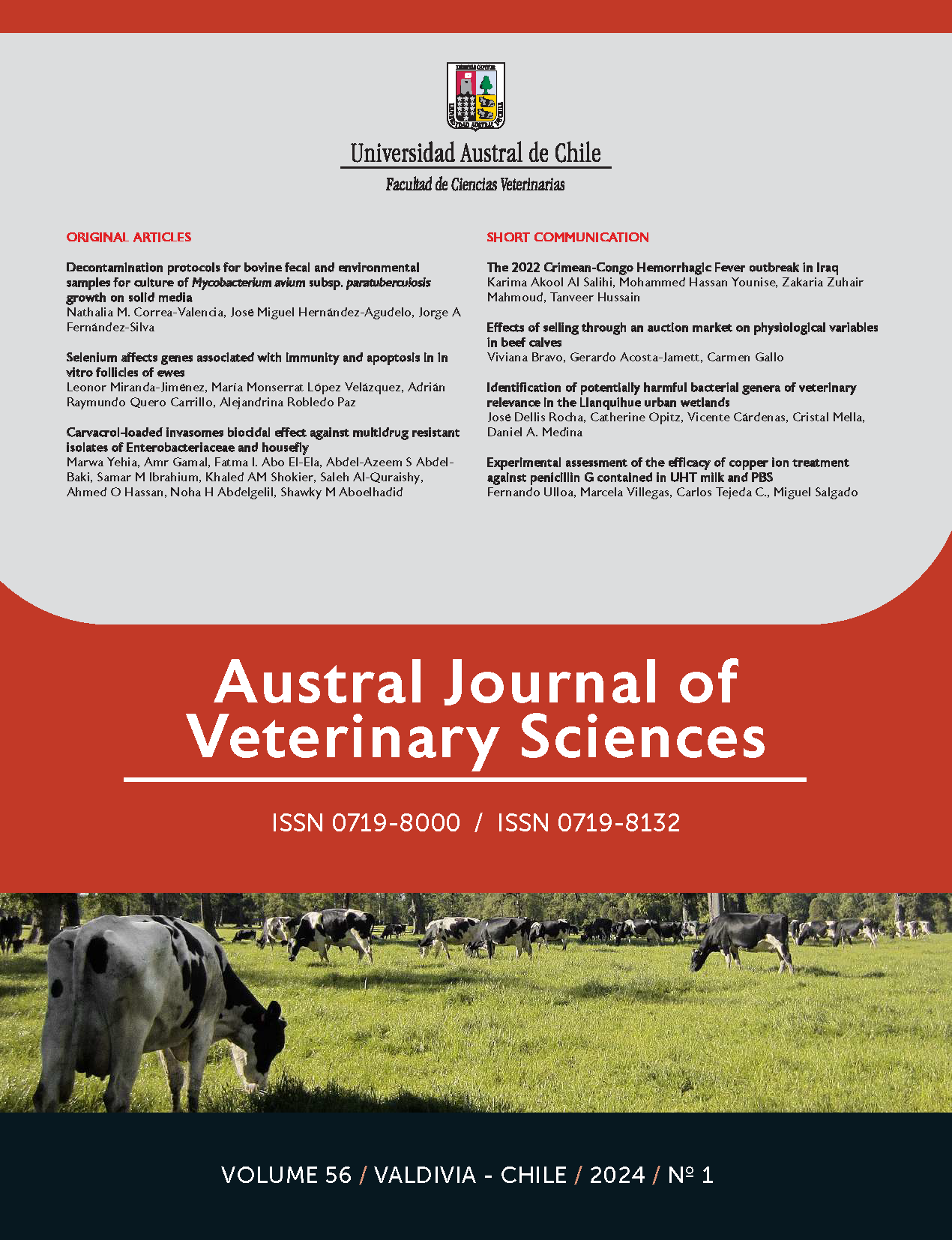The 2022 Crimean-Congo Hemorrhagic Fever outbreak in Iraq
Contenido principal del artículo
Resumen
Crimean-Congo Hemorrhagic fever (CCHF) is an endemic, zoonotic, viral, and tick-borne disease that causes hemorrhagic symptoms. The disease has been reported in Iraq since 1979 comprising six cases between 1989 and 2009. Subsequently, 11, 3, and 33 cases were reported in 2010, 2018, and 2021, respectively. This study describes the 2022 Crimean-Congo Hemorrhagic fever virus (CCHFV) outbreak in different Iraqi governorates. In the 2022 outbreak, 212 cases of human CCHFV were reported between January 1 and May 22. These included 97 (46%) cases confirmed by reverse transcriptase polymerase chain reaction (RT-PCR) and 115 (54%) suspected cases. Most human cases have been reported for livestock breeders and butchers. Approximately half of the confirmed cases (48%) were reported in the Dhi Qar governorate, whereas the others were reported in Missan, Muthanna, Wasit, Diwaniya, Karkh/Baghdad, Rusafa/ Baghdad, Kirkuk, Basra, Najaf, Nineveh, Babylon, and Karbala. Patients with CCHFV showed symptoms of the pre-hem- orrhagic phase, including sudden fever, anorexia, vomiting, diarrhea, headache, nose bleeding, and abdominal and joint pain. Later, hemorrhagic symptoms started with unexplained bleeding lesions, ranging from small petechiae to large hematomas. The factors responsible for the re-emergence of CCHFV included a shortage of veterinary services during the COVID-19 pandemic and illegal slaughtering of animals outside the abattoirs. This led to massive tick infestations that acted as viral vectors.
In conclusion, this is the first report documenting the 2022 CCHFV outbreak in Iraq, with a total of 212 patients and 27 overall deaths, including 13 laboratory-confirmed cases. The authors recommend improving veterinary services provided to farmers. Additionally, future studies need to be done including the sero-epidemiology and molecular studies on local livestock and ticks to understand their roles in circulating the virus to humans.


 https://orcid.org/0000-0002-5698-2678
https://orcid.org/0000-0002-5698-2678